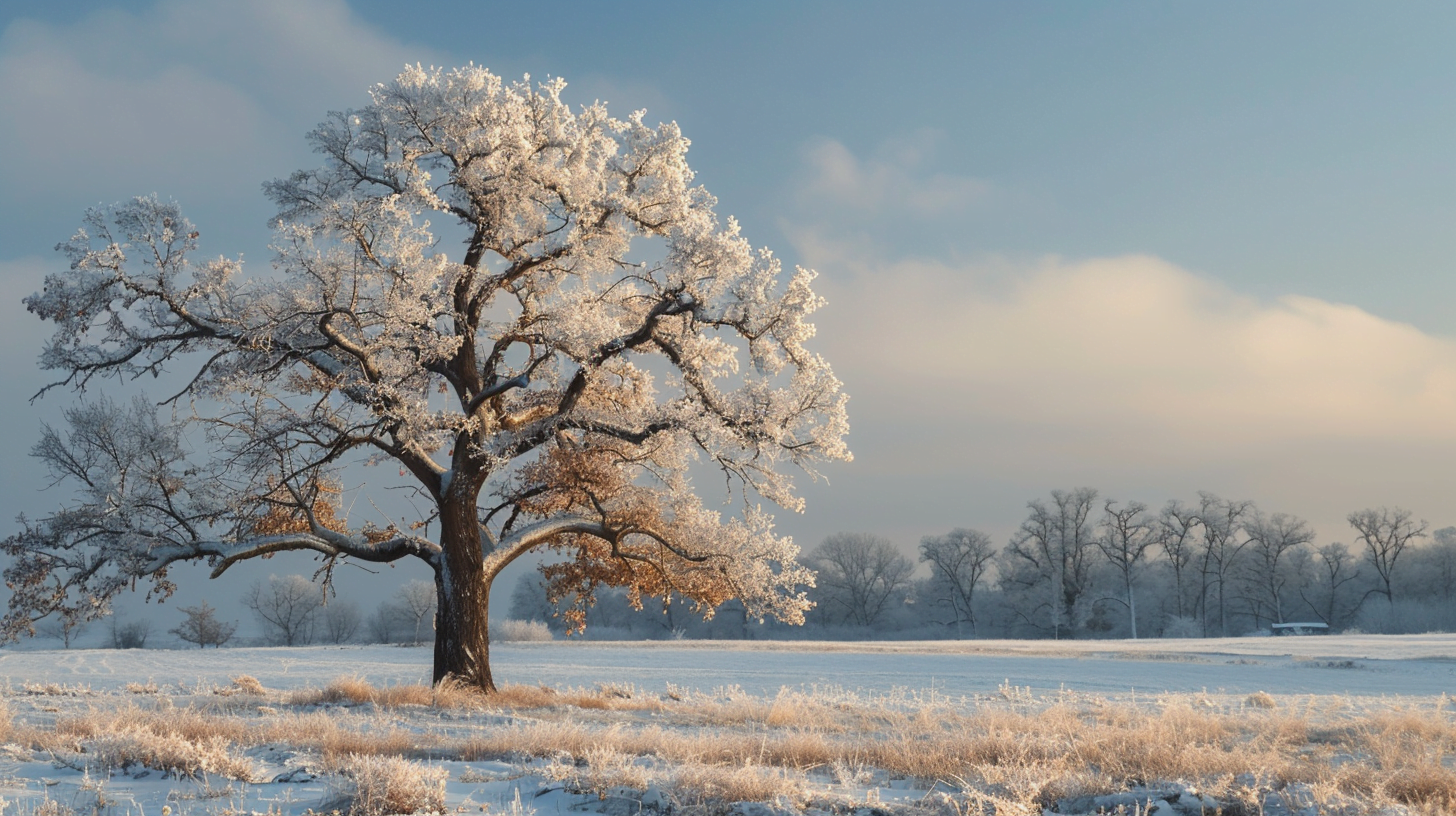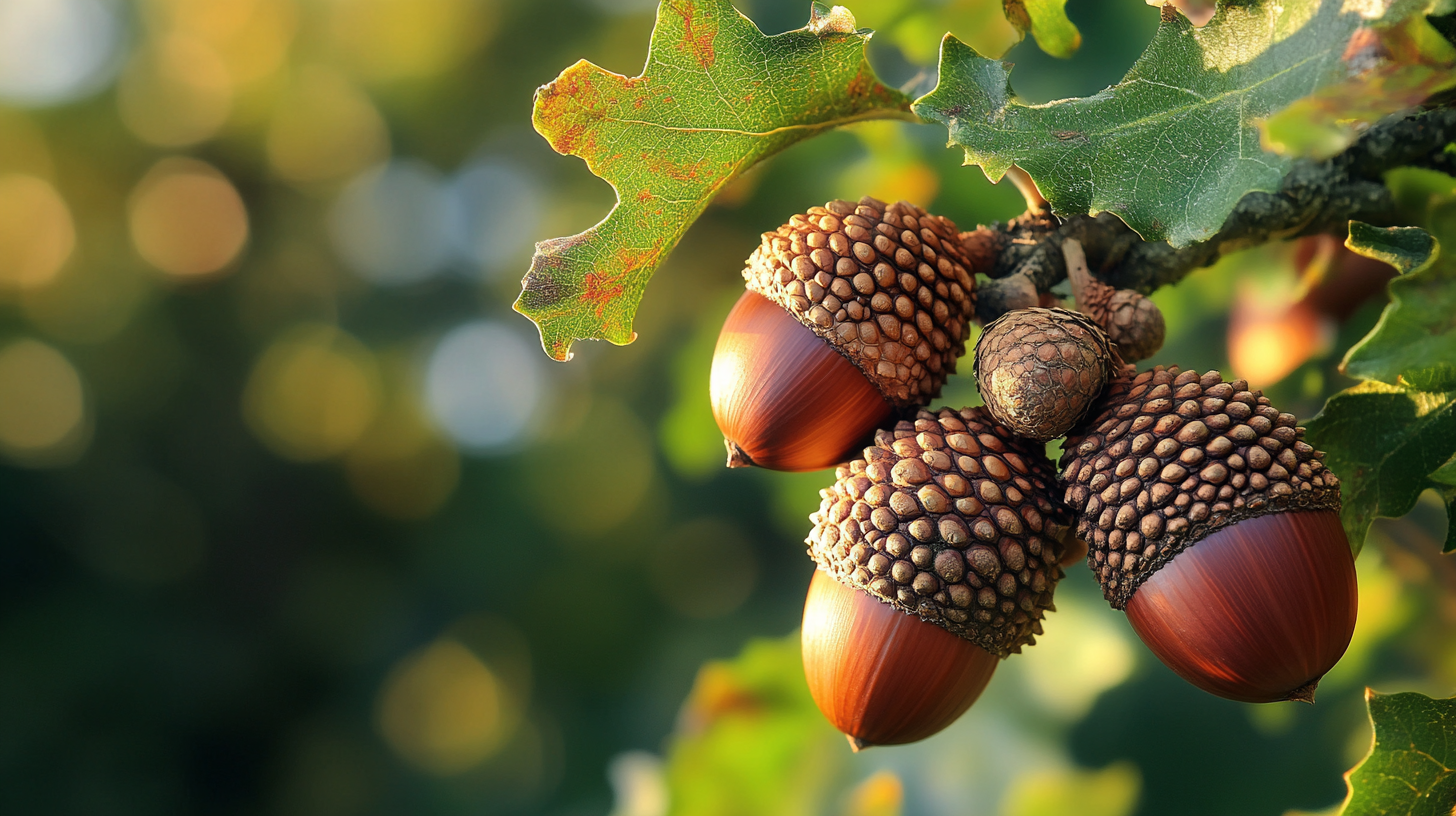Table of Contents
Oak trees are a staple of many landscapes, known for their strength and durability. However, when winter rolls around, many homeowners and gardeners wonder: Can oak trees survive freeze? The answer is not a simple yes or no. While oak trees can be damaged by freezing temperatures, they have adaptations to survive and even thrive in cold climates. In this article, we’ll delve into the natural defenses of oak trees, the factors that affect their survival in freeze, the types of freeze damage, and the care techniques necessary to help them thrive in cold climates.
How Oak Trees Adapt to Cold Climates
Oak trees have evolved to survive in a variety of climates, including those with harsh winters. One of the key ways they adapt is through dormancy. During the winter months, oak trees slow down their growth and enter a state of dormancy, which helps them conserve energy and protect themselves from cold temperatures. This natural defense mechanism allows oak trees to survive temperatures that would be lethal to other plants.
Another important adaptation of oak trees is cold hardiness. Cold hardiness refers to a plant’s ability to withstand freezing temperatures without suffering damage. Oak trees have developed this trait over time, allowing them to survive in climates where temperatures regularly drop below freezing. However, cold hardiness is not the same as freeze tolerance, and oak trees can still be damaged or killed by extreme cold snaps.
Acclimation is another crucial factor in oak tree survival. Acclimation is the process by which a plant adjusts to changing temperatures, allowing it to survive in a wider range of climates. Oak trees in colder climates have adapted to survive freezing temperatures by acclimating to the gradual cooling of the soil and air. This process helps them prepare for the extreme cold of winter, making them more resilient to freeze damage.
Factors Affecting Oak Tree Survival in Freeze
While oak trees have natural defenses against freezing temperatures, there are several factors that can affect their survival in freeze. One of the most critical factors is temperature thresholds. Oak trees can be damaged or killed by temperatures that drop too low, too quickly. For example, a sudden drop in temperature from 40°F to 20°F can cause more damage than a gradual drop from 40°F to 30°F over several days.
Moisture levels also play a crucial role in oak tree survival. Dry soil can make oak trees more susceptible to freeze damage, as the tree is unable to absorb water and nutrients. This is especially important in areas where the soil is prone to drying out during the winter months. Homeowners and gardeners can help mitigate this risk by maintaining adequate soil moisture through regular watering and mulching.
Wind is another factor that can exacerbate freeze damage. Wind can dry out oak trees, making them more susceptible to damage from cold temperatures. In areas with high winds, it’s essential to provide additional protection, such as windbreaks or anti-desiccant sprays, to help oak trees survive the winter months.
Types of Freeze Damage in Oak Trees
Freeze damage can take many forms in oak trees, each with its own unique characteristics and consequences. Frost crack is a common type of freeze damage, caused by rapid temperature changes that cause the trunk or branches to crack. This type of damage can be particularly devastating, as it can provide an entry point for diseases and pests.
Sun scald is another type of freeze damage, caused by rapid temperature changes that damage the bark of the tree. This type of damage is often seen on the south or west side of the tree, where the sun’s rays can cause the bark to warm and cool rapidly.
Dieback is a more severe type of freeze damage, where entire branches or twigs die due to cold temperatures. This type of damage can be particularly damaging, as it can affect the overall health and structure of the tree.
Caring for Oak Trees in Freeze-Prone Areas
While oak trees have natural defenses against freezing temperatures, they still require care and attention to thrive in cold climates. Preparing oak trees for winter is essential, and involves several key steps:
- Watering and mulching: Regular watering and mulching can help maintain soil moisture, reducing the risk of freeze damage.
- Pruning and training: Pruning and training oak trees can help them develop a strong structure, making them more resilient to wind and snow.
- Protecting young trees: Young oak trees are particularly vulnerable to freeze damage, and may require additional protection, such as covering or wrapping, to survive the winter months.
In areas prone to extreme cold snaps, additional protection may be necessary. Covering trees with blankets or tarps can provide an extra layer of protection, while anti-desiccant sprays can help prevent moisture loss. In extreme cases, supplemental heat may be necessary to protect oak trees from damage.

Conclusion
Oak trees are incredibly resilient, and with proper care and attention, they can thrive in even the coldest climates. By understanding the natural defenses of oak trees, the factors that affect their survival in freeze, and the care techniques necessary to help them thrive, homeowners and gardeners can enjoy the beauty and benefits of oak trees for years to come. So, can oak trees survive freeze? The answer is a resounding yes, with a little help from us.




